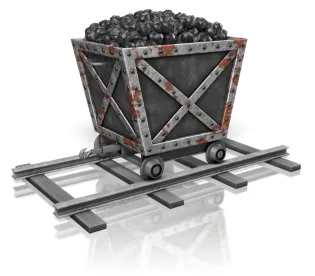In January 2017, the Mine Safety and Health Administration (MSHA) published a final rule on examinations of working places in metal and nonmetal mines. The final rule was scheduled to become effective on May 23, 2017, but on March 27, 2017 MSHA issued a proposed rule to delay the effective date to July 24, 2017. Shortly thereafter, the effective date was again changed to October 2, 2017. On September 12, 2017, MSHA published two proposed rules that would make limited changes to and further delay the effective date of the final rule.
First, MSHA is considering certain changes to the final rule to address: (1) when workplace examinations must begin; and (2) the adverse conditions and related corrective actions that must be included in the workplace examination record. MSHA’s initial final rule required the workplace examination to be conducted before miners begin work in a working place so conditions that may adversely affect safety or health are identified before miners are exposed to those conditions. MSHA’s recent modification proposes to change the final rule to require the competent person to examine each working place at least once each shift before work begins or as miners begin work in that place for conditions that may adversely affect safety or health.
According to MSHA, this proposed change provides mine operators flexibility on scheduling workplace examinations as it permits miners to enter a working place at the same time the competent person conducts the examination. Like the final rule, the proposed change does not require a specific time frame for the examination to be conducted, but, according to MSHA, it intends the examination occur in a time frame adequate to assure any adverse conditions are identified before miners are exposed.
In addition, the initial final rule requires mine operators to make a record of the examination and include, among other information, a description of each condition that may adversely affect the health or safety of a miner. According to the preamble to the final rule, this record must include a description of adverse conditions that are corrected immediately. MSHA, however, has recognized it is the mine operator responsible for the design of its safety program and having an exception for conditions that are corrected immediately “would provide operators with increased incentives to correct those conditions promptly.” Thus, MSHA is now considering modifying the final rule to require the examination record include only those adverse conditions that are not corrected promptly. Likewise, and in conformity with this proposed change, MSHA is considering a modification to the final rule that would require the examination record include, or be supplemented to include, the date of corrective action only for adverse conditions not promptly corrected. MSHA is soliciting comments on these proposals until November 13, 2017 and has scheduled four public hearings, with the first occurring on October 24, 2017 in Arlington, Virginia.
The second proposed rule would further delay the effective date of the final rule beyond October 2, 2017 to March 2, 2018. MSHA is also soliciting comments on this proposed rule and those comments are due by September 26, 2017.
As the workplace examination rule continues to unfold, there are several steps mine operators can take. First, it is imperative for mine operators to assure the workplace examiner they assign to an area is competent to conduct the examination. The competent person is defined in 30 C.F.R. Section 56/57.2 as “a person having the abilities and experience that fully qualify him to perform the duty which he is assigned.”
In FMC Wyoming Corporation, 11 FMSHRC 1622 (Sept. 1989) the commission held the phrase “competent person” means someone capable of recognizing hazards known to be present in the work area or the hazards which are predictable in the view of a reasonably prudent person familiar with the mining industry. In FMC, a foreman was overseeing the removal of asbestos from an electrical installation without any prior knowledge of the hazards associated with asbestos. Accordingly, the commission found the supervisor was not competent to conduct a workplace examination in the area.
In addition, it is equally important to remember workplace examinations must be adequate. The new “adequacy” standard was articulated by the commission in Sunbelt Rentals, Inc.; LVR, INC.; and Roanoke Cement Co., LLC, 36 FMSHRC 1619 (July 2016). In Sunbelt, the commission held the requirement for a competent examiner means there must be substance to the examination and the examination must be meaningful. The purpose of the workplace examination is to identify conditions that may affect safety and health.
Going forward, the competency of examiners and the adequacy of his or her examination will be judged by the reasonably prudent competent examiner test set forth in Sunbelt. In reviewing these cases commission judges will be looking for evidence allowing them to determine if the person conducting the examination had the ability to recognize current hazards or to predict potential hazards that might occur in the workplace. Finally, the defense of any workplace examination enforcement action will require the examiner to effectively articulate the facts surrounding the hazardous condition.
Against this backdrop mine operators must ensure the persons responsible for conducting the examinations understand the operation’s citation history and are properly trained on applicable examination requirements. Mine operators should also ensure the examiners have the authority and resources to promptly initiate appropriate action to correct such conditions.
Second, mine operators must create and maintain a culture of safety in the workplace. This includes having examiners view their examination responsibilities as more than a routine task but an invaluable tool that protects the health and safety of everyone at the mine – themselves included.
Finally, mine operators should conduct regular safety meetings with their employees to discuss conditions found during workplace examinations. Creating and maintaining an open dialogue about safety strengthens the company’s commitment to a safe and healthy work environment. Examiners may learn about issues during those meetings that may help them identify and correct issues found during their examinations.




 />i
/>i
